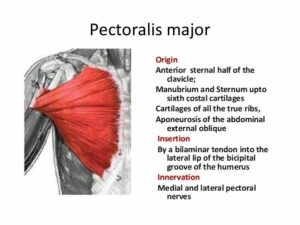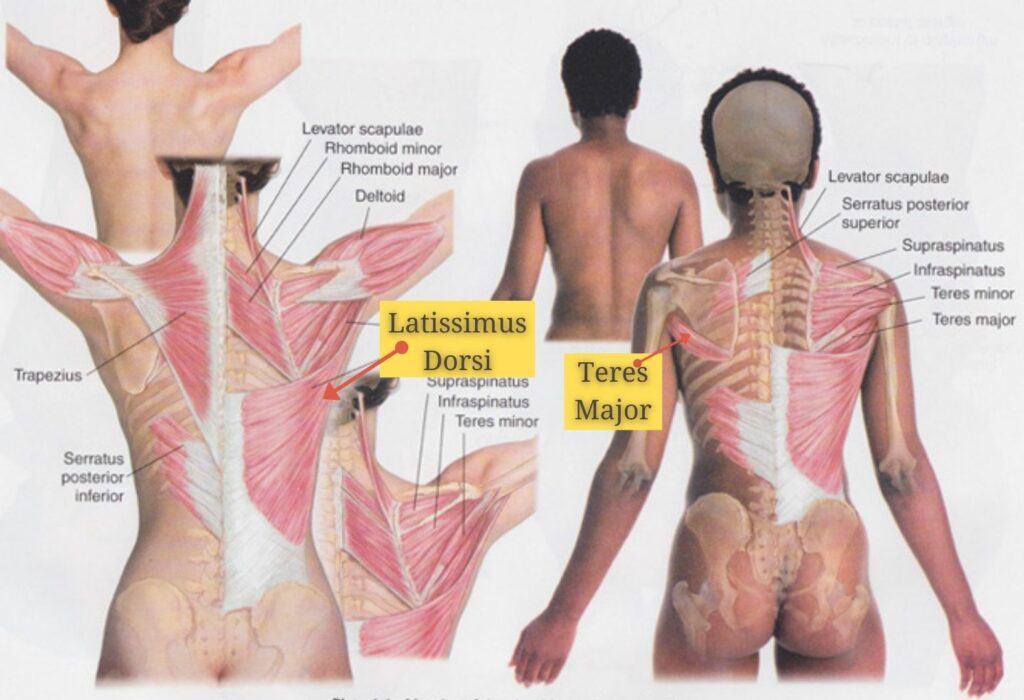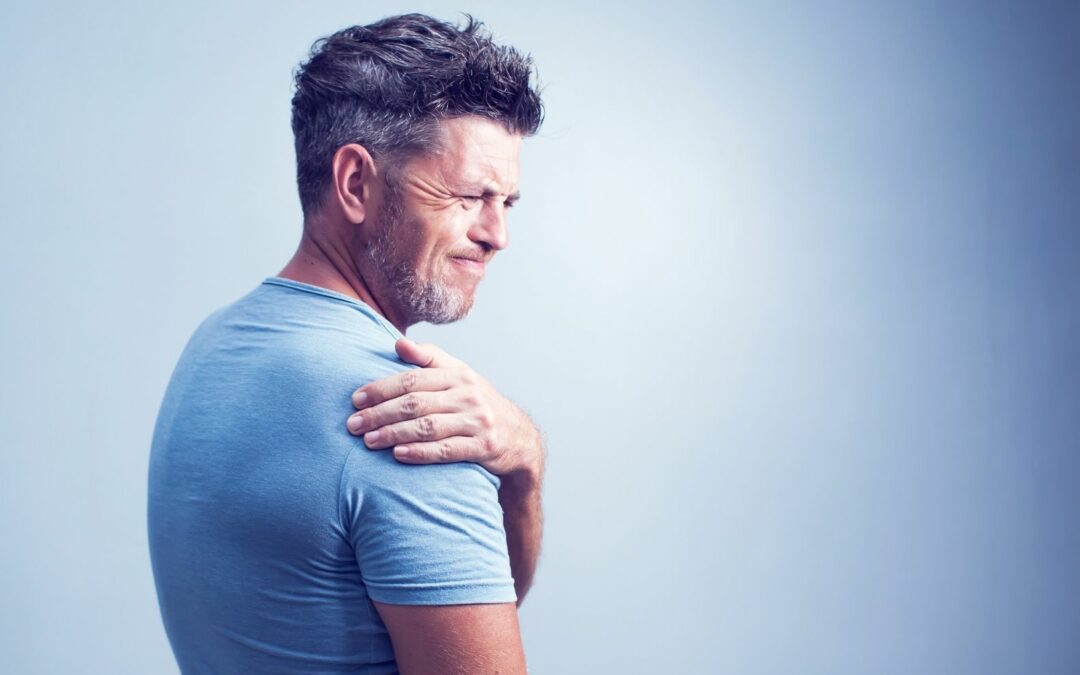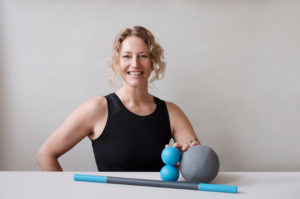I’m Cat Matlock with Free Body, and I want to talk with you about the big three. What’s the big three? What does that even mean? Why am I talking about it? So, the big three are three big powerful muscles that have a huge effect on your shoulders and the health of your neck. Understanding the big three and how they affect your upper body will truly change your life.
So let’s get down to it. The big three muscles are pec major, latissimus dorsi, and teres major. You pec major is a muscle along the front of your chest and it attaches the front of the arm bone. Latissimus is a back muscle. It comes out of the thoracolumbar fascia, a very fancy name for a big sheet of connective tissue that lives in your low back. Latissimus dorsi is one of the biggest muscles in your body, and it comes up and attaches at the the front of your arm bone. Finally the teres major, is like a thick fat rope that goes from the bottom corner of your shoulder blade, passes through the armpit and attaches at the front of the arm bone


Latissimus, pec major, and teres major all attach at the front of your arm, drawing your arms down and in. And they are all big powerful muscles. You see, because of our evolutionary past, our bodies are designed to climb. We’re designed to be magnificent creatures, climbing rocks, hills, & trees. And we have very powerful muscles that rotate our shoulders inward because of this. This is why it’s so easy to slouch. If we have a tendency to slouch or round forward, all three of those big 3 muscles are then going to become a little bit short. Over time, the big 3 (pecs, lats, & teres) pull the shoulders in and forward, and the arms forward in the shoulder joint, which then wreaks havoc on the rotator cuff, which then continues to pull everything else down and then strains the neck, which can lead to neck pain, headaches, shoulder dysfunction, loss of range of motion in your shoulders and all kinds of crazy pain in your shoulder joint. Phew!
Now let’s talk about how this can affect the rotator cuff. The rotator cuff is a group of four muscles and those four muscles are supraspinatus, infraspinatus, teres minor, and subscapularis, and those four muscles together contract to stabilize your humerus in the socket. And the humerus is a ball and socket joint, and that socket really likes to be in the center of the socket. So when the big 3 end up drawing us forward we’re actually pulling the shoulder forward in the socket and taking it out of that central location, which then activates the rotator cuff. The rotator cuff’s immediate response is to try to pull the humerus back into the center of the socket creating a tensional imbalance. Over time, it’s going to distort the joint. It’s going to dry out the joint. You’ll lose range of motion.
So, sometimes the loss of range of motion that we’re experiencing in our bodies is really just a position. It’s a result of the position or posture that we’re putting our bodies in all the time. We end up distorting that tensional balance. Over time our bodies think, “Oh, this is the position I’m supposed to be in.” At that point it can even feel weird to hold better posture because your body is not accustomed to it.
So, what kinds of problems does tension in the big 3 cause? It can cause shoulder bursitis. It causes rotator cuff injury. It causes fraying in the biceps tendon, it causes loss of range of motion in the neck and shoulders. It can lead to neck pain. It can lead to headaches, tension headaches, and chronic pain.
The big 3 handle internal rotation, bringing the shoulder in. On the back of the shoulder blade we only have two tiny muscles to handle external rotation, opening the shoulder up. They are called infraspinatus and teres minor. Think about it. The fact is that those two muscles are small against the big 3. All of the big 3 are drawing the shoulder in, and that little tiny teres minor and infraspinatus have to work against those big muscles. They really don’t have a chance.
Now here’s the thing. This is such a key. Infraspinatus is what causes aching at the front of your shoulder. It’s what causes trigger points that refer deep in the shoulder joint. This pain can make it hard for you to reach behind you, to hook your bra, to lift your arm up to brush your hair or put your hair up in a ponytail.
This all it begins in the big 3, pecs, lats and teres.
I had a client show up at the clinic. She had some shoulder bursitis and very little range of motion in her arms. Her shoulder were in major pain. So, I asked her “What do you do for a living?” She told me she works in shipping, picking up boxes, holding them in her arms, carrying and moving boxes here and there. I knew that a lot of tension was going to be in her pecs. She said she couldn’t really lift her arm very far at all on the left side. And the pain was so terrible in her joint. So, she got on the table and I released her pecs. In 5 or 10 minutes I had relieved her pain!
After that I released her lats and her teres major, and she went was able to reach full range of motion. The fact that she was having an inability to lift the arm up isn’t a reflection of the strength of that muscle to lift the arm up. It’s really a reflection of how tight and stuck those muscles were that pull the arm down.
When those shoulder muscles are stuck short and pulling forward, the neck has to pull forward, too. It doesn’t have a choice. It’s kind of just along for the ride. So opening the pecs, the lats and the teres, freeing those muscles, will completely change your experience in your shoulders and your neck.
I hope this information is helpful. Thanks so much for reading.





Very very helpful.